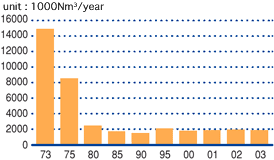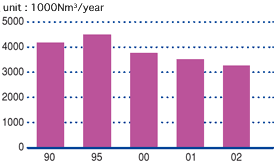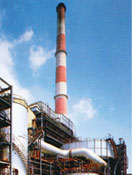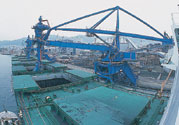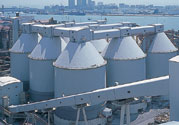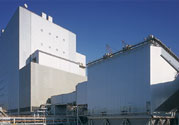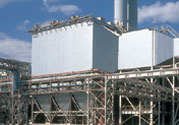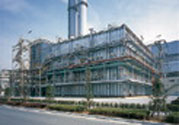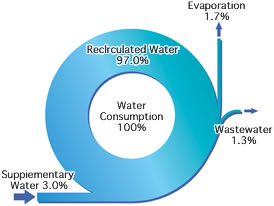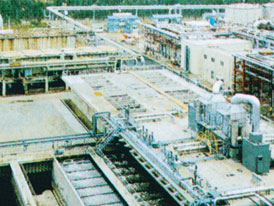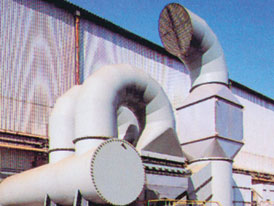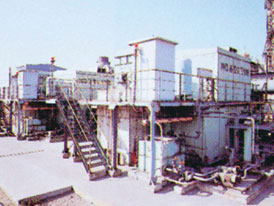Home > About Us > Corporate Social Responsibility > Sustainability Report > Environmental Sustainability Report 2004
| Environmental Management Environmental Sustainability Report 2004 |
|||
| Environment-friendly Production (4) |
 Based on the analysis results of various environmental burdens, Kobe Steel has been reducing a wide variety of burdens by improving production processes to more effectively protect the environment; introducing state-of-the-art equipment and refurbishing facilities; and thoroughly implementing self-management. Kobe Steel, including its group companies, will further strive to reduce its impact on the environment by improving its production processes and enhancing the capabilities of pollution control equipment.
Environmental Activities in Group Companies Shinko Kobe Power Inc. is an urban power station that coexists in harmony with the community. On this theme, the power station has state-of-the-art environmental facilities (for example exhaust gas denitrification equipment, flue gas desulfurizer, and electrostatic dust precipitator) to prevent air pollution. Enclosed coal-storage silos and transfer conveyors are used to prevent coal dust from scattering. In addition, thorough environmental conservation measures are taken, including water quality conservation, noise, vibration, and offensive odor prevention, measures against wastes, and environmental harmony, by installing cutting-edge environmental analysis apparatus and optimizing the environmental management system through ISO14001. For these environmental measures, about one third of the total construction cost of the power station (about 200 billion yen) was allocated. Furthermore, part of the existing facilities in Kobe Works, such as the raw material yard and sintering plant, were shut down, while the fuel for steelmaking facilities was changed from heavy oil to city gas. These comprehensive environmental measures by the power ptation including Kobe Works have made it possible to keep the impact on the surrounding environment to a minimum. 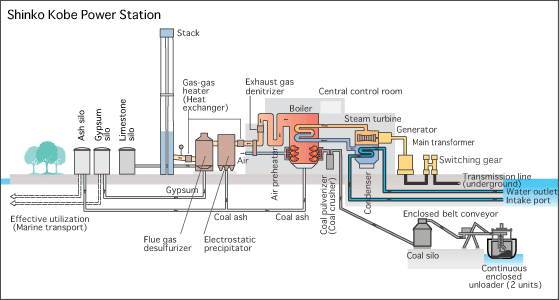 Shinko Kobe Power Inc.(JAPANESE)
Odors generated at works and plants are treated using deodorizing equipment. Odor monitoring is implemented at regular intervals and necessary measures are taken accordingly. For example, in fiscal 2003, water-granulating equipment for blast-furnace slag was installed to suppress odor generation in slag aging. |
|||||||||||||||||||||||||||||||||||||||||||||||||||||||||||||||||||||||||||||||||||||||||||||||||||||||||||||||||||||||||

